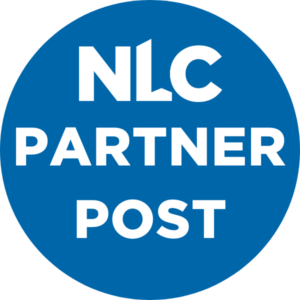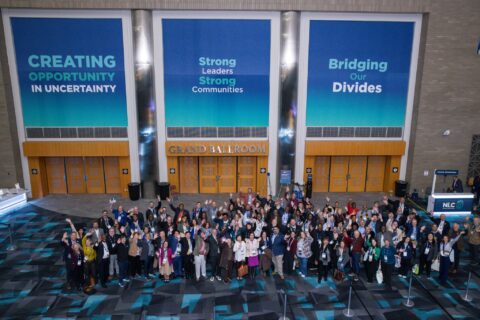The Alaskan city of Wasilla may have a population of just under 10,000 residents, but its influence extends far beyond its city limits. Surrounded by rural communities, Wasilla serves as a hub for more than 150,000 people from the region who rely on the city for essential supplies, entertainment and transportation.
Recently, Wasilla recognized the need for critical infrastructure updates and faced the challenge of funding both large- and small-scale projects required to sustain the region. With its small population, relying solely on the general revenue budget was not enough. The solution for Wasilla came in the form of braided funding.
In municipal finance, braided funding means taking various forms of funding and weaving them together one source of revenue with another for the same project. This allows a city to use various revenue streams to stretch their budget and make costly projects feasible. Each source of funding has its own compliance and reporting requirements, which are monitored separately with stakeholders aware of how the funds are being used.
Incorporating Federal Funding into Large-Scale Updates
Speaking to Wasilla Councilmember Ian Crafton about the municipalities braided funding efforts, Crafton gave several examples of projects that gave the community a refresh and welcomed neighboring commuters. The first was Wasilla’s wastewater system, which began operating at full capacity in 2017 and required an expensive update. Initial cost estimates for fixing the treatment plant came in close to $30 million, which could have put the city’s finances in a precarious position without braided funding.
At the time, Wasilla’s annual general revenues sat at $60 million, making this upgrade half of all funds for the community. Over the years, the city built this nest egg through a 2.5 percent sales tax, which was capped at $12.50 per transaction. This meant that sales tax only brought in a limited amount per transaction and wouldn’t have been sustainable if not for the funds coming from residents and visitors alike. This helped maintain essential services, such as the wastewater treatment plant, without raising local taxes. These funds would need to be used by the city for its portion of braided funding expenses but could not be spent in full.
When it came to the upgrade, Wasilla secured federal aid from the Environmental Protection Agency (EPA) with support from Alaska Senator Lisa Murkowski. This made it so the city could allocate a manageable $5.7 million of its own general revenue to fund the design phase of the plant upgrade, examining options from retrofitting the existing facility to building a new one. By combining federal grant monies with a small local match, the municipality was able to move forward without committing to a project it could not financially sustain.
Another example of braided federal funding can be seen in Wasilla’s airport expansion project. The city prioritized the airport not only for the benefit of its own residents, but also because it serves as the only regional airport within a nearly 50-mile radius — acting as a vital avenue for getting supplies into the community. Recently, the municipality accepted funding of up to $12 million from the Federal Aviation Administration (FAA). This grant will go towards lengthening the airport runway, adding a new apron and building a taxiway. The FAA’s aid was able to cover 95 percent of the cost, which leaves the city responsible for just 5 percent of the airport upgrade.
Further, Wasilla encouraged competitive bidding to push project costs down from an initial estimate of $16 million and further negotiated a lower cost for taxpayers. For the city, the braiding of FAA funds with city revenue made advancing regional air capacity possible without burdening residents. As Councilmember Crafton explains, “This other entity is going to give us some money, and we’re not going to have to spend the tax dollars that they’re giving us.”
Regional Partnerships for Braiding Small Projects
Smaller projects, like Wasilla’s parks, have benefited from a braided approach as well. The city partnered with their encompassing Matanuska-Susitna Borough and the State of Alaska for a $40,000 project on trail improvements at Lake Lucille Park. The combined revenue funding streams allowed for small improvements to pave formerly dirt pathways, making them more walkable for Alaskans.
Additional capital for this project allowed for further updates. The National Association of Realtors provided a $7,500 pass through grant from their local board. This helped to fund accessibility upgrades for the park. While the park was a modest project, the partnership shows how small-scale braided funding could be utilized to improve quality of life services for residents’ daily use.
Managing Compliance for Braided Funding
One caveat cities come across with braided funding is that it introduces complexity in municipal financial reporting. Each funding source will have its own reporting timelines, eligibility rules and compliance requirements that city finance teams must adhere to, which can be challenging for a small municipality with limited staff.
According to Crafton, Wasilla approaches this by providing additional, as needed, support for their staff. The city will contract professional grant writers and lean on the resources provided by the Alaska Municipal League’s staff to obtain and comply with braided funding expectations. Meanwhile the city’s finance staff work to maintain oversight of tracking and reporting, which has proven effective for the municipality. Meeting national audit requirements, like the city did with CARES Act funding, allows the city to avoid any costly repayment fines or unexpected stressors.
Key Insights for Small Cities
Councilmember Crafton had several insights to share for small municipalities interested in utilizing braided funding for local projects:
- Start by Funding the Project’s Design: Use a smaller pool of money for early planning phases. Then refine cost estimates to reinforce applications on larger awards.
- Match Funders to the Right Project: Choosing the right funding partner for a project lowers the cost of how much the locality will have to contribute. Airports, wastewater systems and parks each align with different federal, state, or philanthropic programs.
- Utilize Small Grants: Modest contributions, like the $7,500 Wasilla received from the Alaska Association of Realtors, go a long way towards quick and usable improvements for residents when braided with other funding sources.
- Approach Reimbursements with Caution: If a municipality’s financial reserves are healthy, paying upfront with the promise of a reimbursement will allow projects to move faster. But reimbursement opportunities should always be vetted with caution before moving forward.
- Plan for Operations Cost: When considering a new project, it’s important to be future thinking. Long term costs for operations after the project is completed will likely be sustained by the city. Consider the financial sustainability of the project before accepting aid.
- Communicate with Residents: Community members respond to clear explanations, timelines and tangible results for how braiding lowers reliance on local tax revenue to avoid extra cost burden being put on them.
For Wasilla, braided funding isn’t a strategy to be only used for large projects, but a standard practice that helps their small community thrive. By combining funding opportunities, the city has been able to move forward projects ranging from wastewater planning to airport expansion while maintaining its financial stability. Similar small cities might not share Wasilla’s geographic considerations, but the key lesson is that creating long-term benefits for residents is possible when multiple streams are woven together, each carrying a piece of the load.








